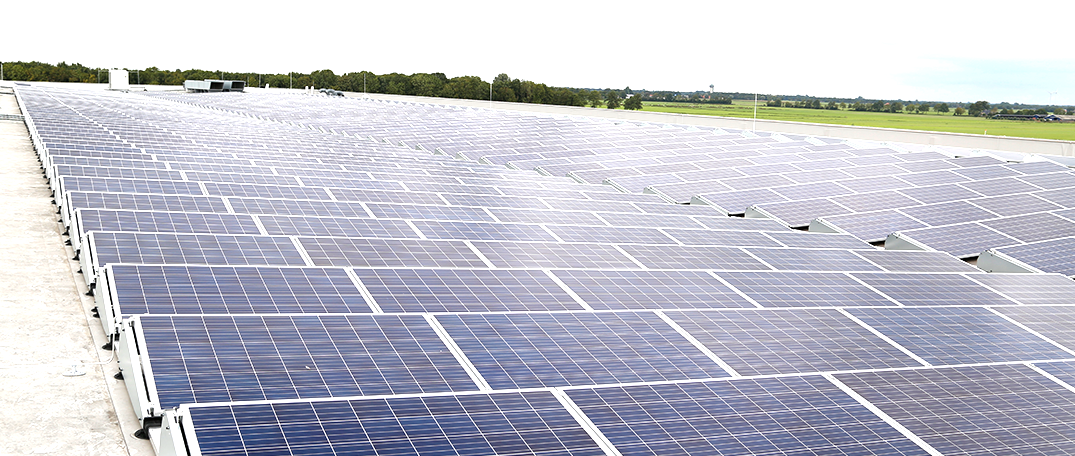
WDP wants to double the size of the solar energy portfolio in 2016

The completion of the photovoltaic installation on the roof of the wehkamp.nl warehouse marks the first major step towards an extension of WDP's solar energy portfolio. The 2.5 MWp installation covers a surface area of 33,000 m².
Sustainable energy production incentive
WDP announced last year a plan to extend its solar capacity from 30 to 60 MWp. This will be achieved primarily in the Netherlands as most warehouses in Belgium already have solar panels installed. Kris Van der Veken, WDP's technical manager for sustainability: “We are still actively involved in 5 or so projects in Wallonia, where a favourable support measure is continuing to be applied. We already have a great deal of solar installations in Flanders. At the same time, the grant based on green certificates has been cut back significantly. However, we are looking for opportunities to extend our PV portfolio by, for example, acquiring buildings that already have a photovoltaic installation (such as purchasing the DHL site in Bornem). Conversely, it was only in 2015 that the Netherlands decided to introduce a sustainable energy production incentive scheme (SDE and SDE+) This scheme enables us to achieve a healthy return which can be compared with the margin we achieve with building rentals."
Owing to the decision, new photovoltaic installations are due to be placed on quite a lot of warehouse roofs. And some of them should even be operating by the summer. This also means that the installers are now busy making preparations. “Towards this end we always confer with the users of the buildings. The aim is to match the capacity as closely as possible with the power consumption onsite. We want to avoid building excessively large installations, as this would mean having to feed too much electricity into the network. The return on this is much less than any savings on the electricity bill. That is why good understandings have to be reached with users. One of the benefits for tenants is being able to enjoy sizeable cuts in their electricity bills,” says Robbert van Boxelaere, WDP's sustainability engineer.
WDP will be responsible not only for their design and construction but also for financing and managing the buildings. Tenants can therefore enjoy an overall solution and a comprehensive service. They do not have to get involved with the management or maintenance of the solar panels. “The huge advantage of own-power production is having to purchase less electricity from the network, hence not having to pay taxes and distribution costs either. Nowadays these represent the lion's share of the energy costs. Thanks to the grant scheme, we as an operator can also look forward to a highly consistent cost price The compensatory measure takes account of fluctuating market prices while totally excluding volatility. We can look forward to a fair return over a 15-year period,” says Kris Van der Veken.
CO2-neutral buildings
The extension of the photovoltaic installations is helping WDP to attain both its financial and sustainability objectives. “We would like to offer our customers carbon-neutral buildings, with a low total cost of ownership (TCO). For example, the Wehkamp warehouse has been awarded a Excellent BREEAM certificate owing to its sustainability performance. The production of green electricity is an integral part of this,” says Robbert van Boxelaere.
Apart from offering a solar power installation to its customers, WDP also seeks to lend them support in improving their energy management activities. This has to be based on a global energy monitoring system. This includes not only an examination of past energy bills but also an in-depth campaign to assess electricity and gas consumption in the various departments with the campaign being spread over a longer period of time in order to be able to factor in the seasonal effects. “This kind of analysis may reveal a daily peak in energy consumption as a result of all warehouse vehicles suddenly being charged once the working day is over. Spreading charging operations throughout the night enables a company to avoid high peak tariffs and save a great deal of money. One of our tenants even switches on a diesel generator as soon as a peak level is imminent. We use energy monitoring to improve the TCO of a building,” says Kris Van der Veken.
He adds that these projects also enable WDP to anticipate future decisions by the various competent authorities. “Europe has imposed strict energy standards to be applied by 2020 and other new ones to be applied by 2030. This refers, for example, to the share of green electricity in the overall supply. Belgium will have a struggle trying to meet these standards. In the light of the country's dire financial situation, we think it unlikely that any new support measures will be approved. Consequently, in the future, the country will have no other option than to impose a legal obligation for owners of new and existing buildings.”

